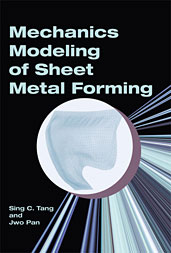Technical Paper
A Design Study to Determine the Impact of Various Parameters on Door Acoustics
2003-05-05
2003-01-1430
Once the design of a door sheetmetal and accessories is confirmed, the acoustics of the door system depends on the sound package assembly. This essentially consists of a watershield which acts as a barrier and a porous material which acts as an absorber. The acoustical performance of the watershield and the reverberant sound build-up in the door cavity control the performance. This paper discusses the findings of a design study that was developed based on design of experiments (DOE) concepts to determine which parameters of the door sound package assembly are important to the door acoustics. The study was based on conducting a minimum number of tests on a five factor - two level design that covered over 16 different design configurations. In addition, other measurements were made that aided in developing a SEA model which is also compared with the findings of the results of the design study.

